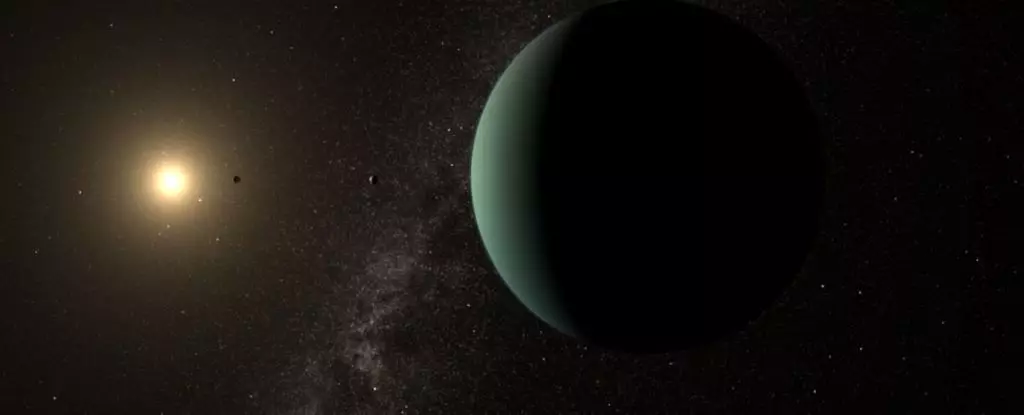The cosmos constantly surprises us, revealing potential sanctuaries for life beyond our planet. A significant leap in this ongoing exploration has emerged with the confirmation of an exoplanet located a mere 20 light-years away from Earth, orbiting a star classified as HD 20794. Dubbed HD 20794 d, this celestial body stands out with a mass estimated to be nearly six times that of our home planet. Importantly, it occupies a position within the habitable zone of its Sun-like star, suggesting that conditions might be ripe for the presence of liquid water—a crucial ingredient for life as we know it.
Astrophysicist Michael Cretignier from Oxford University expressed immense satisfaction upon confirming the planet’s existence, noting the initial difficulty posed by the faintness of the signals detected, which hovered at the threshold of the spectrograph’s capabilities. The proximity of this exoplanet offers an optimistic outlook for future astronomical missions, potentially allowing us to capture its likeness directly.
To locate an exoplanet that could support life, astronomers first need to understand its star’s habitable zone—the region where temperatures allow liquid water to exist. If an exoplanet is too close to its star, the intense heat causes any surface water to evaporate. Conversely, if it lies too far away, water is likely to freeze, rendering the environment inhospitable.
For HD 20794 d, the conditions appear promising, as it orbits a yellow dwarf star analogous to our Sun, but with slightly different characteristics. This star is smaller and older, providing an easier timeline for its planets to stabilize and evolve. This raises intriguing possibilities for the planet’s environmental conditions, essential for fostering life.
The journey to unveiling HD 20794 d wasn’t straightforward. Although astronomers initially identified three exoplanets around HD 20794 in 2011, it took a significant breakthrough in 2022 to pinpoint the additional planet. Cretignier’s work involved detecting subtle, periodic wobbles in the star’s spectrum—suggestive of an unseen planet affecting the star’s motion through gravitational interactions. This meticulous data examination, aided by advanced instruments like the European Southern Observatory’s ESPRESSO, unveiled the authenticity of HD 20794 d.
Further analysis revealed that this intriguing world possesses a minimum mass of 5.82 times that of Earth, with its radius estimated to be 1.7 to 2.1 times greater. With an orbital period of around 648 days, HD 20794 d finds itself within the habitable zone for part of its orbit, which is crucial for understanding its potential for hosting water.
Despite the promising signs, numerous uncertainties cloud the prospects of HD 20794 d as a truly habitable exoplanet. Notably, its elliptical orbit means that it spends only a portion of its time within the habitable zone. At its farthest point—known as apastron—the planet could be positioned in a region too frigid for liquid water to persist.
Additionally, the exact dimensions and density of the exoplanet remain unknown, raising vital questions about its composition. If HD 20794 d has a smaller radius, it might resemble a rocky super-Earth, akin to our own planet. In contrast, a larger radius could indicate a more gaseous, “fluffy” mini-Neptune, which would render it far less favorable for habitability.
While the potential for life-supporting conditions on HD 20794 d is tantalizing, considerable research is necessary to fully understand this enigmatic world. Advances in observational technology and future space missions will be critical in confirming the planet’s nature and its ability to maintain the essential conditions for life. As we delve deeper into this unique system so close to our own, the quest for understanding our universe becomes ever more profound.
The discovery of HD 20794 d not only ignites hope for finding life beyond Earth but also challenges us to question what criteria are essential for habitability. The universe, it seems, may hold more surprises as we continue our exploration—reminding us that, while we have come a long way, we have much further to go. With developments in astronomical technology, who knows what other potential life forms await us just beyond the cosmic horizon?


Leave a Reply